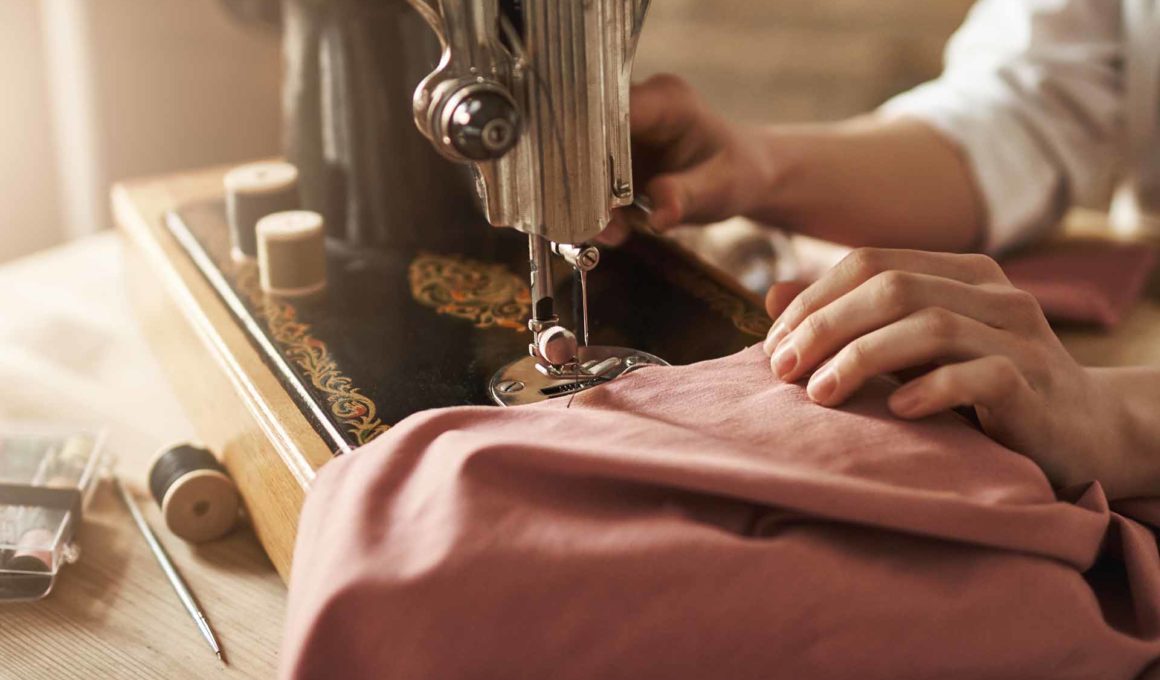Table of Contents
Learning to sew felt is more straightforward than other materials. Felt can be machine-sewn or embroidered by hand. Felt is a valuable and good material for beginners. Since the edges of the felt do not fray, you can apply absolutely any stitch to join the edges, make appliqués, or even use quick, no-sew methods.
See Also: Felt Crafts for Beginners – The Complete Guide
How to Sew Felt by Hand
You might want to hand-sew your felt fabric. You may not have access to a machine, or your project may not require it. Hand stitching is particularly useful as a finishing feature or for securing a raw hem edge on felt. It gave your project a unique touch and finished look.
Felt doesn’t wear out much compared to other fabrics but felt may not be a good idea for the job if you plan to use your item a lot.
See Also: How to Sew Felt: Key Points
When sewing the felt by hand, do not pull the thread too much, or the felt may be deformed! Follow the texture and natural direction of the fabric when working with felt, and keep your hand stitching consistent throughout for best results.
Suppose you are doing appliqué or decorative hand sewing technique on felt. You might use cotton or even metallic thread in this situation. There will almost always be some trial and error involved, as some yarns are better suited to particular types of felt than others.
When sewing felt by hand, the action stitch, blanket stitch, and whip stitch are most often used to sew the felt together and finish the edges. Blanket stitch also adds a decorative touch. Straight stitch, saddle stitch, and French knot are great for decorative purposes. The French knot is the most challenging; they are quick to master.
Small projects such as small stuffed animals, Christmas decorations, finger puppets, and the like can be easily sewn by hand. If you sew such projects by hand, it gives a more handmade look.
You can check out our Hand Embroidery Stitch for Felt article to learn how to sew basic embroidery stitches.
How to Sew Felt with a Sewing Machine
I recommend doing a test piece on your machine first to get the proper tension and stitch size. Straight stitch is commonly used for felt stitching. Blanket stitch is usually used on sewing machines, but you can also try sewing appliqués. The felt gives your project a beautiful handmade look. The standard presser foot should work fine when sewing most felt projects.
If you’re sewing with thinner felt or craft, felt, you can double the fabric for highly processed shapes. You may also consider using a backing fabric for added stability. 100% wool felt can usually support itself.
Choosing the right thread, scissors, and machine needles are essential for machine sewing of felt fabrics. Felt is a very soft material, so you can use a conventional sewing needle if your felt is not very thick.
As for the scissors, always use fabric scissors and never paper scissors when cutting felt. When cutting felt fabrics, fabric scissors produce a clean edge and are safer to use.
Correct thread use is also essential when sewing felts with the machine! It’s true that general all-purpose polyester thread works well for sewing layers of synthetic fiber felt together. Nonetheless, a cotton or cotton-blend thread may be suitable for your particular felt material.
Making a sample test piece on a piece of felt is the easiest method to ensure you’re using the correct thread type. You can even try several types of yarn to see which one you prefer!
Sewing Machine Settings for Felt Stitch
When machine stitching felt sheets, stitch length, patterns like straight and zig-zag, and tension are all important. The felt may gather and warp if the stitch is too short or tight, and if it is too long, it will not hold tightly and fall free.
Like the yarn sample test, a scrap test piece can help you figure out the correct stitch pattern, stitch length, and tension for your machine and felt fabric. Then you may confidently begin stitching your item!
Sewing mistakes happen to everyone! If you need to remove thread seams from felt fabric, there are a few things to consider. Felt tends to have tiny fibers that can stick, so be careful not to catch the material instead of the thread when using a seam ripper.
Also, don’t pull too hard or too rapidly on the thread you just pulled out, or the felt will distort. After removing it, lay your felt fabric flat on your work table and flatten it slightly, especially where sewing holes might be.
Felt Sewing Tips
Sew the small curved edges slowly, one seam at a time. Sew with a handwheel if necessary. Stop with the needle in the fabric, elevate the presser foot, and turn the cloth as needed before lowering the presser foot.
The felt double layer sewing trick is one of my tips on how to work with felt. Sewing two equal pieces of felt together can be complex as they move slightly under the foot.
You can use double-layer felt-shaped pieces in the following situations:
- You can use it to increase the durability of your felt projects.
- You can use the hooks to hide the sewing thread while attaching the buttons.
- You can use it when sewing puppets and finger puppets.
- You can use it while attaching velcro to one side of the felt.












